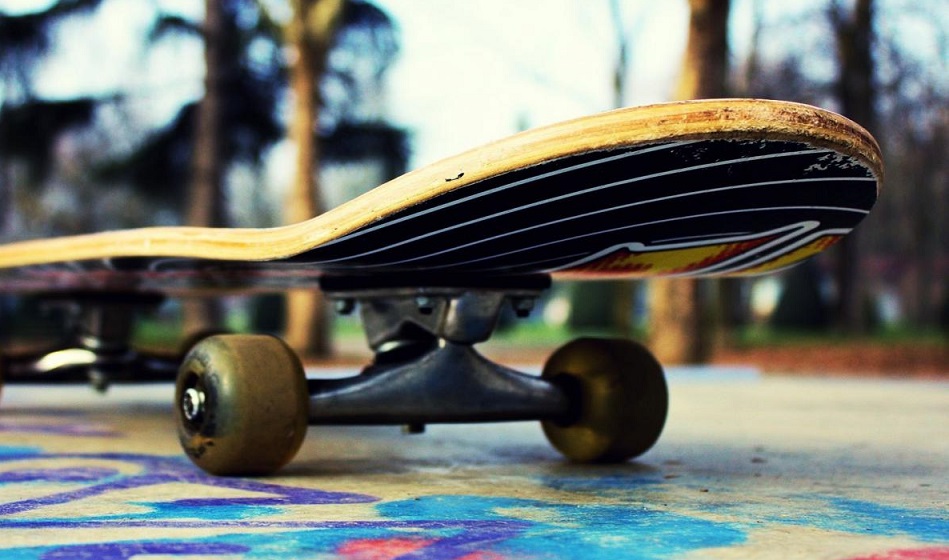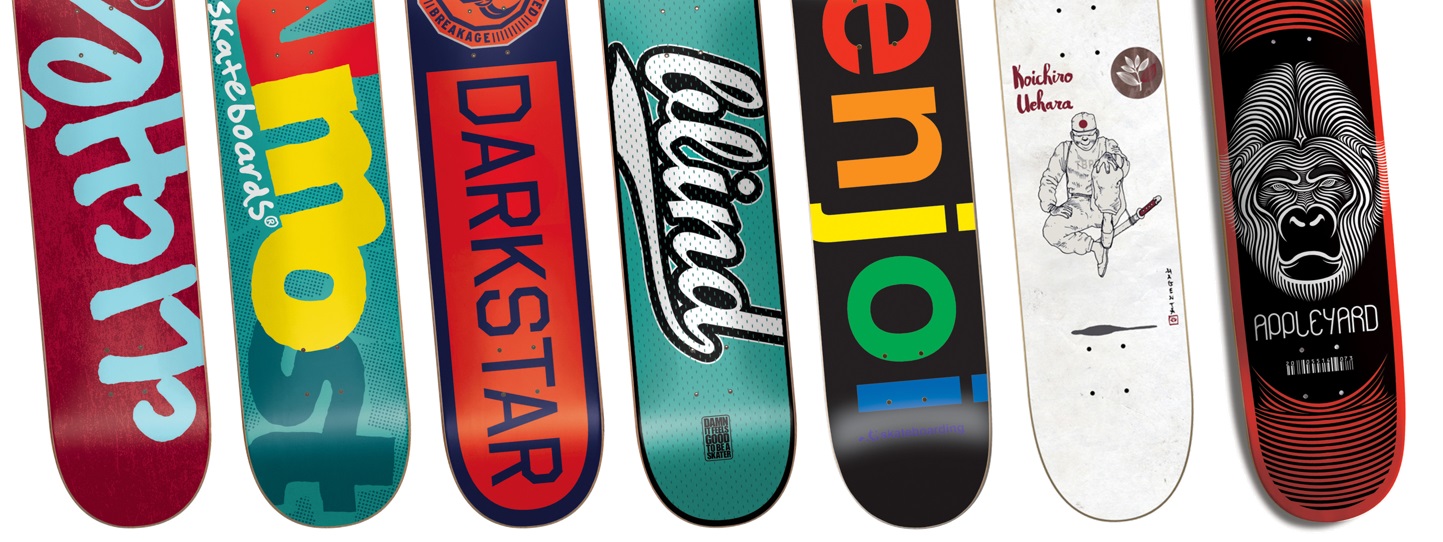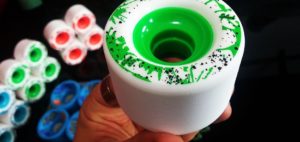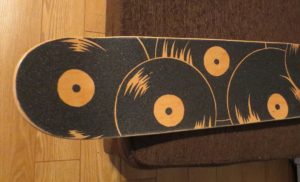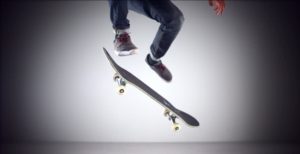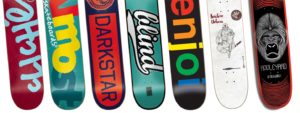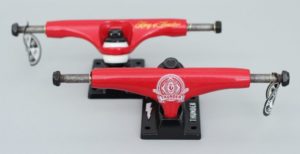You want to buy a skateboard, but you aren’t sure what to choose. A catalog might offer you countless shapes and sizes of boards, different gauges of wheels, a garden variety of trucks, and enough hardware sizes to make a handyman’s head spin. A trip to a local skate shop might help, where you can hold the product in your hands and feel it under your feet before you buy. There are a few key things to keep in mind when picking out the right one, and this series of articles will help guide you in the right direction so you pick up a board that best suits your taste and style. We’ll begin with choosing the right deck, which is often the most important step to any skateboarder — and one that will most certainly be repeated many times.
Picking out a deck
First and foremost, the aspiring skateboarder will look for a deck. The shape, size, and graphic picked are all a part of expressing yourself, and skateboarding is big on personal expression. But this step goes beyond just visual appeal. Decks range from very small and thin to wide and long, so it’s important to go with something you feel comfortable standing on. Let’s start with the shape:
Shapes and concave
These days, there’s really no such thing as a standard skateboard. Most people will still think of the popsicle-stick shape that dominated the sport through the nineties and early last decade, but a recent trend has emerged for companies to reissue designs that have not been in vogue since the 1980s. Some of these resemble a fish when viewed from above, with a wide midsection that tapers inward over the trucks and reopens into a wide, flat tail – hence the common nickname, “fishtail boards.” Others are in-between, being more uniform in shape but still wider at the nose and narrower near the tail. These are called pool cruiser decks, and make it a little easier for riding around pipes and pools. With a recent rise in the number of public parks which offer such terrain as concrete pools and more varied transitions, these too have become more popular and are easily found in shops or catalogs.
A board’s concave – the degree to which it bends up at the sides (if at all) will affect how you skate. If you think you’d like to ride the streets and try your hand at fancy flip tricks, a board with a higher concave is best. Similarly, you would want a higher tail and nose (or the back and front ends of the board). This is a board’s “pop.” The steeper the angle on these ends will determine how easily you can pop the board into the air, which is key to performing any basic tricks.
Longboards
On the other hand, if you’re just looking for something to cruise around on, to run to the store or get to class, you might look in to getting a longboard, which is closer in appearance to a surfboard. Straight and flat across, longboards can be anywhere from just a couple to four or five feet in length, and often come prepackaged with specially-made trucks and wheels. These trucks will be pretty wide, to give you better balance on the larger board, and the wheels are generally wider in diameter, and notably softer than your average skateboard wheels. These offer better grip on most any surface, so whether you’re pushing along a brick path or ‘bombing’ down a steep hill, you’ll be all the more ready to keep your balance. They also get you going pretty fast, so you should always wear a helmet. Head injuries are no laughing matter, and they do occur, so it’s always best to play it safe.
Skateboard graphics
Graphics can be important, as well – but they are a matter of personal preference. It is often much cheaper to buy a “blank” board, or a board with a small imprint logo on a plain wood grain, but for those that want a rad picture or crazy color scheme, there is no shortage of options or variety. It is important to keep in mind that once you start using your board, the graphics will often get smeared, scratched, and sanded back into the woodgrain, so it’s up to you whether you want to spring the extra money. Picking the graphic can be the most exciting step of choosing a board. For the more artistic skateboarder, keep in mind that if you get a blank deck, you can always fix it up with graphics of your own!
Costs and where to buy a skateboard
A board doesn’t have to be an expensive purchase, though it can be, depending on what you’re looking for. Decks range from around $30-$35 for a blank deck without graphics, to upwards of $60-65 for reissues and specialty shapes. Typically, $50 is a reasonable price for an average brand-name deck with graphics. Longboards get a little more expensive, but as they often come in complete packages, still work out to a good value at anywhere from $80-$150.
A complete package on a regular deck will save you money as well, instead of mixing and matching all the different components, you can set one up all at once and save a few bucks. These generally run right around $100. Where you buy will affect what you pay, too: an online distributor might have rigid prices, although you can often find sales on discontinued styles and graphics. But your best chance is the local skate shop, where the guys are sometimes willing to barter, and always willing to help a first-timer get started.
Boards are available everywhere, and are priced to fit any budget. An online search will lead you to anything from international distributors of the most well-known brands, to mom-and-pop operations that make boards to custom specifications. It’s always a good idea to check with your local skate shop, too. While the selection may be more limited, shopping locally offers the advantage of allowing you to see and feel the deck first-hand, and is your best-bet for finding something that feels most comfortable, and best expresses your style. Besides, it never hurts to support your local economy and skate scene. Shopkeepers can help you make your decision, and offer additional insight as to the quality of a given brand or style, and personal expertise.
No matter where you choose to buy your board, remember that there is no right or wrong, only what works best for you. So pick one out, and get skating!

